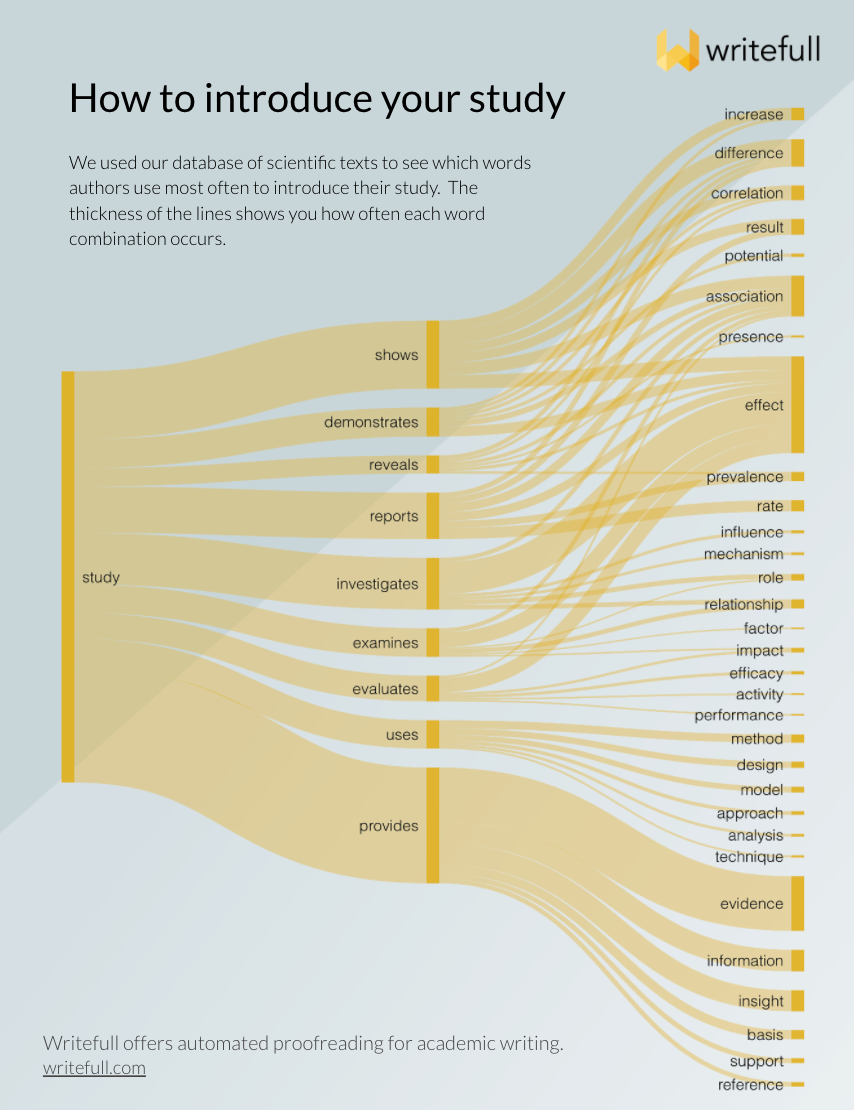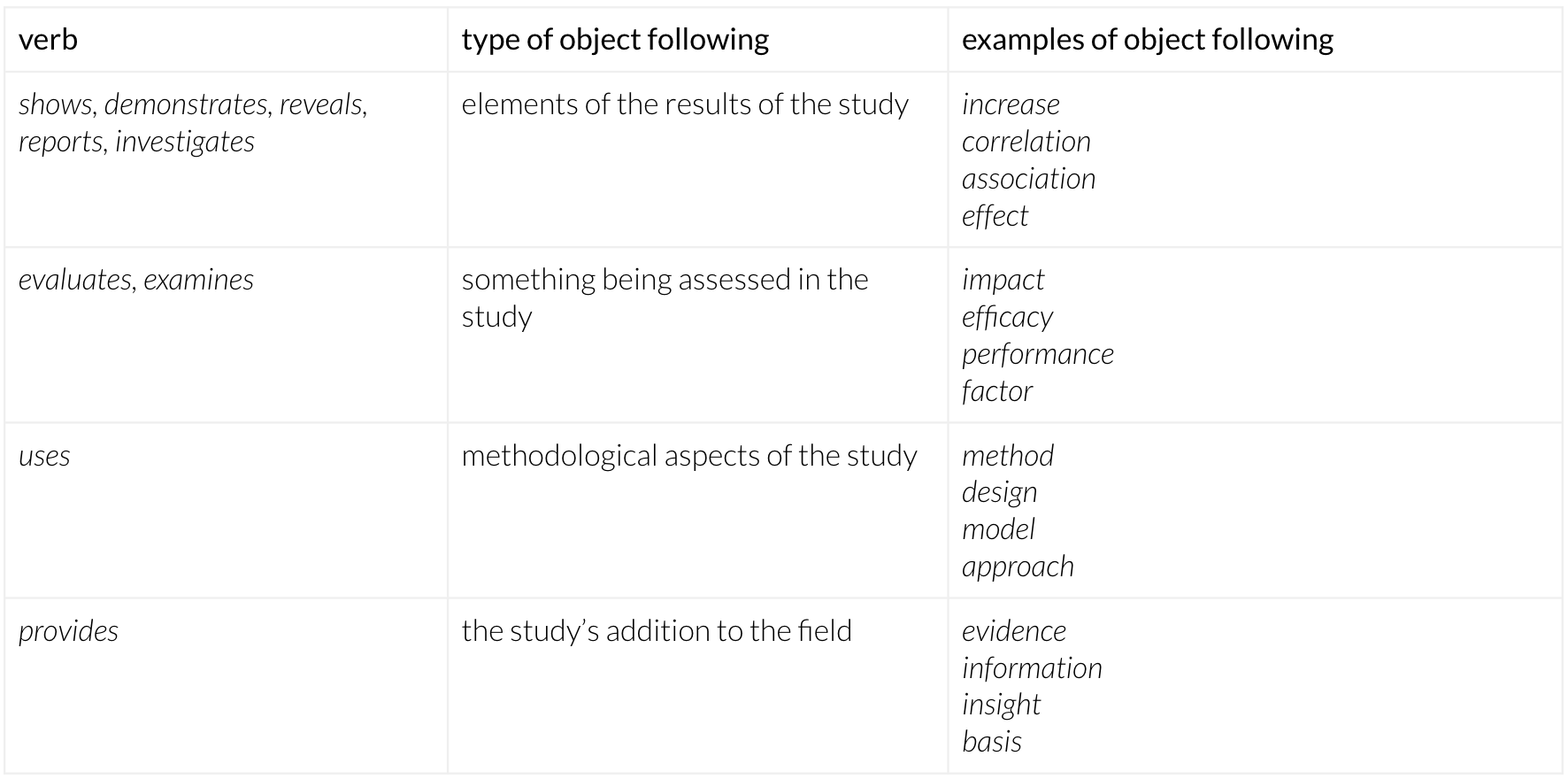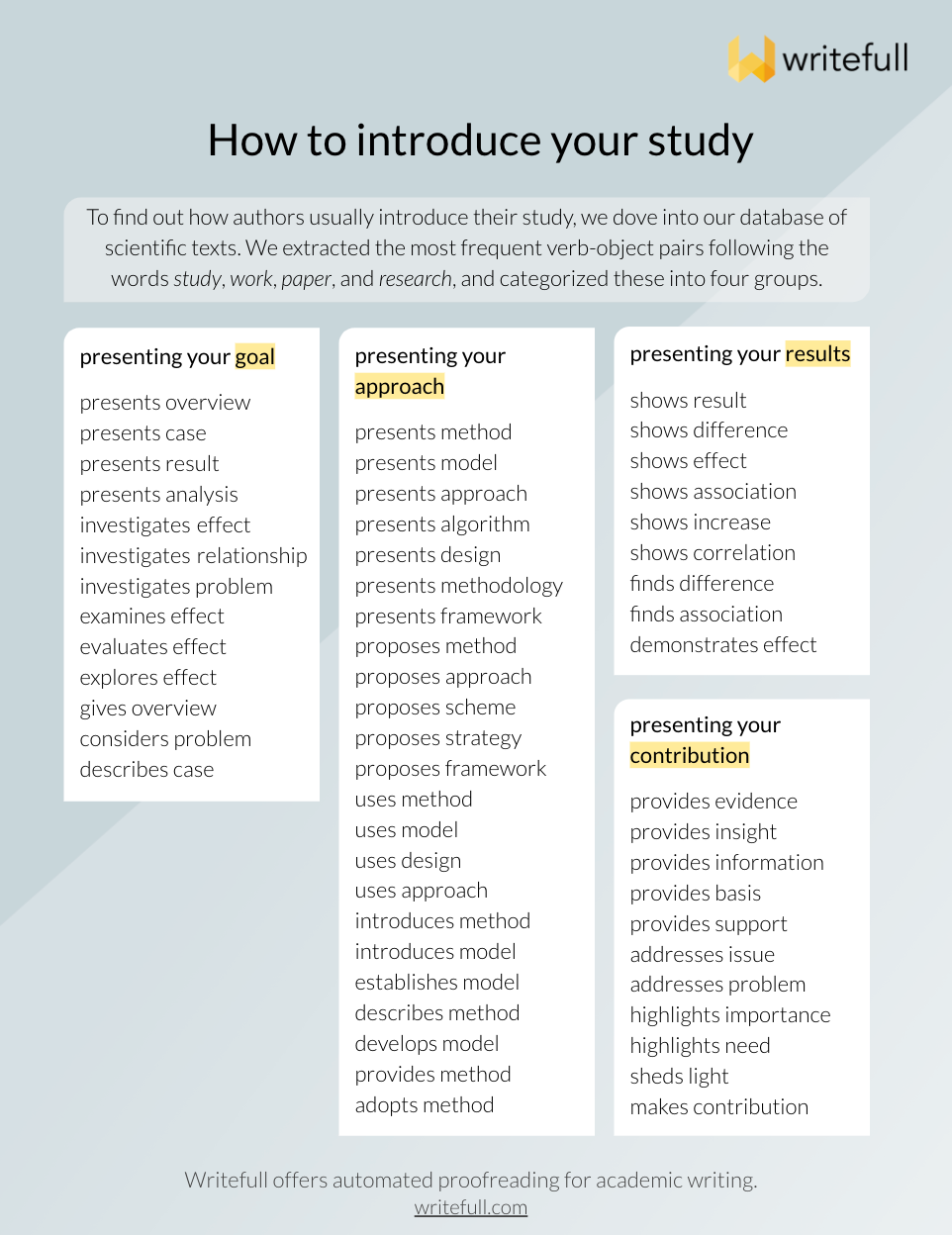You do it in every paper, essay, or chapter: introducing the purpose of your work. In this post, we share a few tips for doing this, together with phrases for you to use - extracted from our database of scientific articles.
Tips
When introducing your work, remember to:
- be concrete. For example, instead of writing that your paper explores vocabulary acquisition from reading by non-natives, write that it explores the vocabulary acquisition from a reading task by non-natives of English who have Spanish as their first language.
- also introduce your objectives. Objectives specify how you plan to accomplish your aim. They are the concrete steps you plan to take. For the above, this could be a statistical comparison of the number of words that your participants can recall the meaning of directly after reading and two weeks later.
What to write
Of course, the wording you choose depends on your aim. Are you describing, analyzing, or proposing something? And is this something a trend, a difference, or a theory?
For more inspiration, we analyzed all study introductions in our database of scientific texts. The graph below shows you the most frequent three-word combinations following the pattern study + verb + object.

Roughly, we see four groups of verbs, each followed by different objects. These are the patterns:

To give you a more comprehensive collection of phrases to draw from, we analyzed the most frequent verb-object pairs following the words study, work, paper, and research. See the sheet below!

Did you find this useful?
Then also try Writefull’s Sentence Palette and Language Search to browse ready-made phrases, see example sentences, and explore academic language patterns!
About the author
Hilde is Chief Applied Linguist at Writefull.

